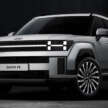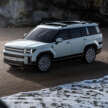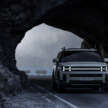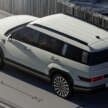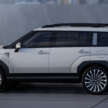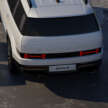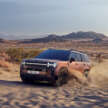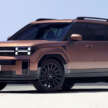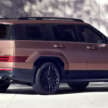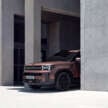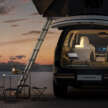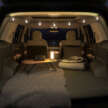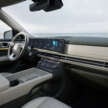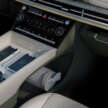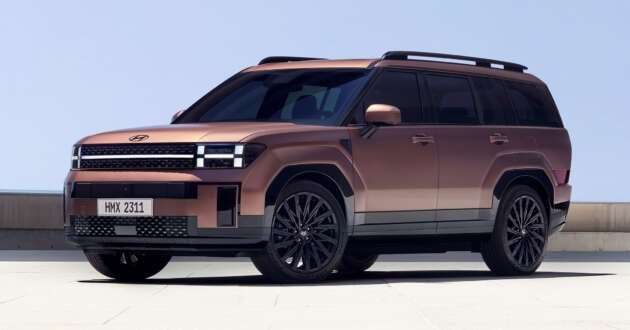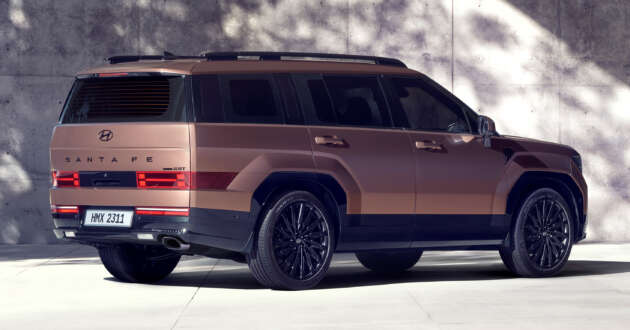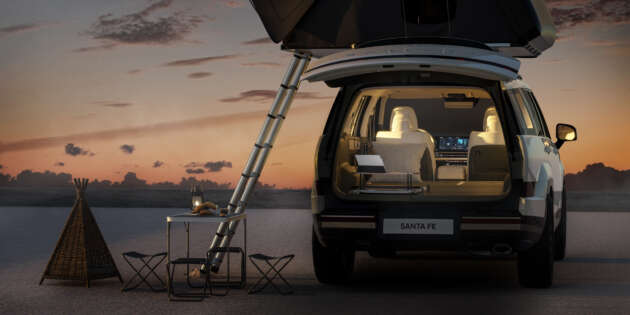
Just over a week after being previewed, the new Hyundai Santa Fe has been launched in Malaysia. Brought in by the newly-formed principal company Hyundai Motor Malaysia (HMY), this fifth-generation three-row SUV comes less than ten months after the facelifted fourth-gen model, offering a radically new design, a much more upscale interior and a far more powerful turbo petrol option.
With the official debut comes confirmed pricing. Initially arriving in CBU fully-imported form ahead of CKD local assembly in the third quarter of the year, the Santa Fe will be offered in three variants – two hybrids, one petrol. Pricing is as follows:
- Hyundai Santa Fe HEV Prime – RM225,000
- Hyundai Santa Fe HEV Prestige – RM245,000
- Hyundai Santa Fe 2.5 T-GDi HTRAC Calligraphy – RM270,000
Compared to the outgoing Hybrid model, the new car is around RM30,000 more expensive (the previous Turbo Hybrid Plus started at RM195,888, while the Max retailed at RM215,888). However, you not only get a whole new generation but also more kit at the top end and the latest technologies, as you’ll discover below.
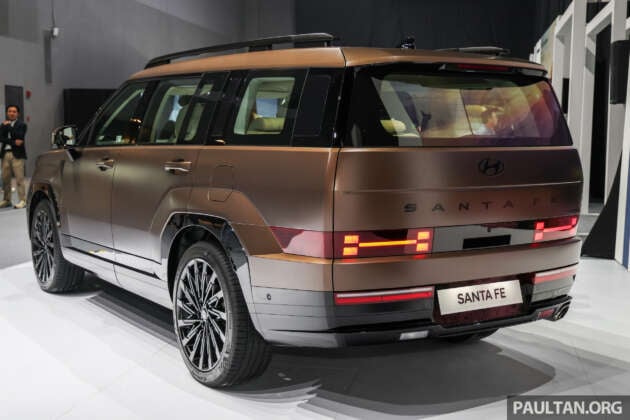
The Santa Fe – and its sibling, the slightly cheaper Kia Sorento – occupies a unique segment in the marketplace, being larger than the usual C-segment SUVs (there is, of course, the Tucson for those cars). Its only real competitor is the soon-to-be-discontinued Mazda CX-9 – with a 2.5 litre turbo engine, it costs a heady RM328,000.
All prices include a new eight-year/160,000 km warranty, significantly longer than the five-year/300,000 km coverage offered by previous distributor Hyundai-Sime Darby Motors (HSDM). There’s also a free inspection at 1,000 km and free labour for the first three service intervals.
The HEV versions carry over the outgoing model’s powertrain, centred around a 1.6 litre turbocharged and direct-injected (T-GDi) Smartstream four-cylinder petrol engine making 180 PS at 5,500 and 265 Nm of torque from 1,500 to 4,500 rpm. This is paired with a 65 PS/264 Nm electric motor and a six-speed automatic transmission for a total system output of 235 PS and 367 Nm (increases of 5 PS and 17 Nm over the old car, the same figures as in Australia), sent to the front wheels.
Meanwhile, the Calligraphy receives an all-new 2.5 litre T-GDi mill that serves up 281 PS at 5,800 rpm and 422 Nm between 1,700 and 4,000 rpm, mated to an eight-speed dual-clutch transmission and Hyundai’s HTRAC all-wheel drive. No diesel option this time around, as is the case elsewhere in the world.
The 1.6 litre turbo hybrid option and underlying N3 platform are about the only items derived from the old car. Everything else is brand new, including the polarising angular design that looks more rugged and, dare I say it, more Land Rover-like. That boxy rear end is claimed to be where the company started the design from, with a large cargo hold and a wide, almost featureless tailgate providing a better place for “the enjoyment of the outdoors.” So at the very least, there’s a reason for the weirdness.
The rest of the shape is said to be suited to both urban settings and the outdoors, with bluff surfaces, wraparound glasshouse design (which on the Calligraphy hides handles in the C-pillars, meant to aid roof access), minimal curves and that upright back.
The front, meanwhile, exudes plenty of road presence thanks to the tall bonnet and H-shaped elements in the LED headlights and wide body-coloured bumper insert – a graphic that’s mirrored in the taillights. A short front overhang and hexagonal fender flares, meanwhile, accentuate the long 2,815 mm wheelbase.
Hyundai Santa Fe Prestige (left) versus Calligraphy
That wheelbase is 65 mm longer than before; in fact, the whole car is not that much bigger, despite what the looks suggest. At 4,830 mm long, 1,900 mm wide and 1,720 mm tall, the new Santa Fe is 45 mm longer, just as wide and 35 mm taller than the current car. Remember, however, that both cars share the same platform, which amazingly was introduced midway through the fourth-gen’s lifecycle.
The Prime comes as standard with reflector LED headlights, tiny 18-inch two-tone alloy wheels and black plastic body cladding, while the Prestige adds projector lamps, 20-inch five-spoke alloys and silver trim around the lower perimeter. The Calligraphy is made snazzier through the use of gloss black cladding and 21-inch matte black multi-spoke alloys.
If the exterior redesign belies the carryover architecture, the revamped interior only reinforces it. Here, the rectilinear theme continues but in a more luxurious direction, with clean surfacing, glossy materials and neat detailing drawing even more parallels to Solihull. Again, there are H-shaped elements here, in the full-width air vent design and the dashboard ambient lighting.
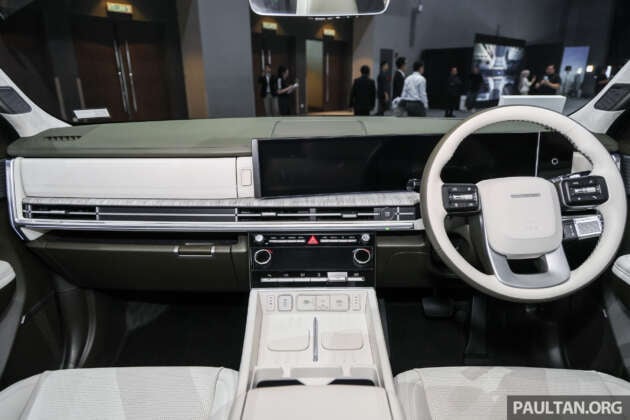
Above the vents sits a curved widescreen display panel that houses the instrument cluster and 12.3-inch infotainment display, while the passenger gets dual gloveboxes; on the Calligraphy, the upper compartment comes with UV sterilisation. The group’s widespread use of capacitive touch buttons for the air-con (unfortunately) remain, but the Santa Fe at least has physical temperature knobs.
Centre console storage has also been rethought thanks to the gear selector moving to the steering column, Ioniq-style – there are now dual smartphone holders and armrest storage that opens from both the front and the back, the latter said to be a world first. Another feature borrowed from the Ioniq 5 and 6 is the one-touch reclining Relaxation Seat for the front seats with built-in ottomans, fitted to the Prestige and Calligraphy models.
Moving rearwards, the increased dimensions have freed up more legroom and, in particular, headroom in the second and third rows in response to consumer feedback. The third-row seats, which are claimed to offer class-leading space, also recline ten degrees more than before, while access continues to be aided by a second-row one-touch tilt-and-slide function.
Both rearmost rows can be folded completely flat to create a “terrace-like” space for people to lounge around with the big tailgate open. Boot space is 628 litres with the third row folded and 1,949 litres with the second-row seats also flattened. There are also plenty of USB-C ports dotted throughout the cabin, rated at up to 27 watts.
Standard kit includes remote engine start, dual-zone auto air-con (with third-row fan speed control), power-adjustable front seats with heating, black leather upholstery, charcoal black ash wood trim, ambient lighting, analogue dials with a 4.2-inch multi-info display, a Qi wireless charger, six speakers, a reverse camera and a hands-free power-opening tailgate using key detection.
Moving up to the Prestige, you get driver’s side seat memory, front seat ventilation, a 12-inch head-up display, a digital rear-view mirror, a 12.3-inch digital instrument display, dual wireless chargers, a 12-speaker Bose sound system and a 360-degree camera.
Click to enlarge
Last but not least is the six-seater Calligraphy, which adds second-row captain’s chairs and a choice of Pecan Brown (with Natural Serenity Oak trim), Black (with Black Ink Metal trim) or Forest Green (with light Eucalyptus Stripe trim) interior and Nappa leather. It also receives dual sunroofs and heated second-row seats, as well as additional Snow, Mud and Sand drive modes as part of the HTRAC system.
Safety-wise, the Santa Fe comes as standard with autonomous emergency braking with front cross traffic alert, adaptive cruise control with stop and go, lane centring assist, blind spot monitoring with collision prevention, front and rear cross traffic alert with auto brake, a door opening warning, a rear seat reminder and auto high beam.
The Prestige adds second-generation AEB with oncoming vehicle detection and evasive steering assist, reverse AEB, dual blind spot cameras and remote park assist through the H-logo key. The standard airbag count has grown to ten, including a driver’s knee airbag, a centre airbag and rear side airbags. Stability control comes as standard, of course.
GALLERY: 2025 Hyundai Santa Fe HEV Prime in Malaysia
GALLERY: 2025 Hyundai Santa Fe HEV Prestige in Malaysia
GALLERY: 2025 Hyundai Santa Fe 2.5 T-GDi HTRAC Calligraphy in Malaysia
GALLERY: 2025 Hyundai Santa Fe Malaysian brochure














































































































































































































